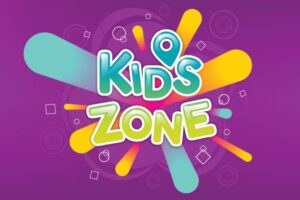Online learning has grown from basic video tutorials to complex, interactive platforms. Initially used for convenience, it’s now a core part of global education systems, adapting quickly to technology changes.
Digital learning began as supplementary content for schools and universities. Today, it stands as a comprehensive alternative, offering full degrees, certifications, and professional development courses for learners of all ages.
The evolution of high-speed internet, cloud computing, and smart devices has made education accessible globally. These tools have reduced geographic barriers, making knowledge easier to access than ever before.
Learners now benefit from flexibility, personalization, and convenience. This evolution continues as platforms improve engagement, adopt AI features, and integrate with real-time communication tools, providing a richer experience than traditional methods.
Virtual Classrooms Explained
Virtual classrooms are online spaces that simulate traditional classroom environments. These allow students and teachers to interact using video conferencing, chat functions, and collaborative tools like whiteboards and breakout rooms.
They provide a real-time experience, letting students join live sessions, ask questions, and participate in discussions. This format brings structure to digital learning, making it suitable for formal education levels.
Educators can share content, display presentations, conduct polls, and assign group tasks. These features mirror the physical classroom environment and make learning more dynamic, inclusive, and responsive.
With the rise of hybrid learning models, virtual classrooms now complement in-person classes. Students attend remotely while others are present physically, creating flexible and inclusive learning environments for everyone.
Benefits of Online Learning
One of the biggest benefits is flexibility. Learners can study from anywhere, at any time, balancing education with personal and professional responsibilities without the need for commuting or relocation.
It provides access to a wide range of courses and specializations. Students can enroll in global universities or skill programs that aren’t available locally, expanding their academic and career horizons.
Online learning supports self-paced study. Students can review material multiple times, skip known topics, and focus on challenging areas. This personalized approach improves retention and reduces stress.
Many platforms offer certifications that enhance career prospects. Whether for career changers or lifelong learners, online learning provides opportunities for advancement that fit around individual lifestyles and needs.
Challenges Faced by Virtual Education
Despite its advantages, online learning comes with challenges. Lack of face-to-face interaction can lead to isolation, especially for students who thrive in collaborative or social environments.
Technical issues such as poor internet connectivity or outdated devices can affect access and participation. These problems disproportionately impact learners in underserved or rural areas.
Self-discipline is another concern. Without a structured environment, some students struggle with time management, motivation, or distractions that reduce their productivity and learning outcomes.
Assessments and academic integrity can be problematic. It’s harder to monitor cheating in online exams, prompting the need for proctoring software or redesigned evaluation methods that emphasize projects over tests.
The Role of Artificial Intelligence
AI is revolutionizing online learning through intelligent tutoring systems, automated grading, and adaptive content delivery. These systems personalize education by analyzing student performance and recommending tailored learning paths.
AI chatbots assist learners with queries, technical issues, and navigation. They provide 24/7 support, reducing delays and improving overall user experience within learning platforms.
Predictive analytics help educators track student progress and identify those at risk of falling behind. These insights allow timely intervention, improving retention rates and academic performance.
AI is also being used for language translation and speech recognition. This enables cross-cultural learning and helps students with disabilities participate more fully in online education environments.
Gamification in Learning
Gamification introduces game-like elements such as points, levels, badges, and leaderboards to education. It enhances student motivation by rewarding participation, performance, and progress.
This approach increases engagement by transforming learning into an interactive experience. When students enjoy what they learn, they’re more likely to retain information and complete their courses.
Educational games simulate real-world scenarios. For example, medical students might practice surgeries in a virtual environment. This provides safe, hands-on learning opportunities that reinforce classroom concepts.
Gamification also encourages collaboration and healthy competition. Students work in teams or challenge peers, building communication and problem-solving skills while maintaining enthusiasm for learning.
The Rise of Microlearning
Microlearning focuses on delivering small, digestible chunks of content. These bite-sized lessons are easier to absorb, especially for busy professionals or students with short attention spans.
This method supports just-in-time learning. Learners can quickly access specific information they need, apply it immediately, and reinforce knowledge through regular, spaced learning sessions.
Videos, flashcards, quizzes, and infographics are common microlearning formats. They cater to different learning styles, making content more engaging and memorable for a wider audience.
Microlearning is ideal for mobile learning. People can complete modules during commutes or breaks, integrating education seamlessly into their daily lives without overwhelming their schedule.
Immersive Technologies in Education
Virtual reality (VR) and augmented reality (AR) are changing how students experience subjects. These tools provide immersive simulations, from exploring ancient cities to conducting science experiments.
VR offers full immersion into 3D environments, allowing students to “visit” places or situations. This can be particularly effective in history, geography, and technical training.
AR overlays digital elements onto the real world. For example, anatomy students can use AR apps to examine 3D organs, enhancing their understanding through interactive exploration.
These technologies make learning more experiential and memorable. They cater to visual and kinesthetic learners, increasing comprehension and retention by engaging multiple senses.
Personalized Learning Paths
Online platforms use data to customize the learning experience. Students receive recommendations based on performance, preferences, and goals, ensuring they stay on track and remain motivated.
Adaptive learning systems adjust difficulty levels based on learner responses. This provides the right challenge at the right time, keeping students engaged without overwhelming them.
Learners can skip content they already know or focus longer on difficult topics. This flexibility builds confidence and makes learning more efficient and enjoyable.
Personalized learning also includes choice in formats—videos, readings, or activities. This respects diverse learning styles and empowers students to take charge of their education journey.
The Importance of Digital Literacy
Digital literacy is critical for succeeding in online learning. Students must know how to navigate platforms, manage files, use communication tools, and protect their digital privacy.
Instructors also need strong digital skills. They must design engaging content, use collaboration tools effectively, and troubleshoot basic technical issues to maintain smooth virtual sessions.
Digital literacy includes understanding online etiquette. Clear communication, respectful behavior, and proper use of discussion forums are essential in maintaining a positive virtual learning environment.
Promoting digital literacy prepares learners for the modern workplace. As most careers now involve digital tools, these skills are crucial beyond the classroom and into lifelong success.
Online Learning for Career Development
Professionals are increasingly turning to online learning for career growth. Many platforms offer courses in leadership, programming, digital marketing, and more, aligning with job market demands.
These programs often provide certifications recognized by employers. Adding them to resumes or LinkedIn profiles enhances job prospects and demonstrates commitment to continuous learning.
Online courses fit into busy schedules. Employees can study outside work hours, avoiding disruptions while gaining skills to qualify for promotions, transitions, or entirely new roles.
Companies also use e-learning for staff development. It reduces training costs, ensures consistent messaging, and allows employees to learn at their own pace, boosting overall productivity.
The Future Outlook of Virtual Education
The future of online learning is promising. Technological advances, increasing acceptance, and global access will continue to shape how people learn and develop skills across their lifespan.
More universities are adopting blended learning, combining online and offline experiences. This model balances flexibility with social interaction and practical experience for a comprehensive education.
We can expect increased use of AI, immersive tech, and real-time analytics. These will create smarter, more intuitive systems that continuously adapt to learner needs and preferences.
Ultimately, virtual education is not just a response to crisis—it’s a powerful, evolving solution. As it matures, it will redefine how societies learn, work, and connect across boundaries.












